



































Published by
Active Media Publishing Group
PO Box 672, Aurora, OR 97002
info@ActiveMediaUSA.com
503.825.2111
ADMINISTRATION
Matthew Nelson, Publisher Catrina Nelson, CFO
Tara Weidman, Executive Assistant
Raeann Van Arsadall, Business Development
PRODUCTION
Jeremy Okai Davis, Art Director
Donovan Darling, Creative Project Manager
Brittany Jungenberg, Director of Marketing
Kate Astle, Copyeditor
Kaity VanHoose, Social Media Manager
Justin Andress, Communications Manager
GRAPHIC DESIGN
Hilary Berg Sean Carver
Dani DeGraw Brittany Jungenberg
Morgan King Justin Nelson
Shawn Schmidt Kaity VanHoose
CONTRIBUTING WRITERS
Justin Andress Patti Jo Brooks
Angie Helvey Lucas Holmgren
Robert Matsumura Dennis McNabb
Kelly Romo Gretchen Van Lente
Ty Walker Sunniva Weidman Kerry Yu
CONTRIBUTING PHOTOGRAPHERS
Laurel Bice Carly Carpenter
Angie Helvey Brittany Jungenberg
Malaina Kinne Lisa Kuhlman
MJ Media Productions Henry Schifter
Hayley Starkey
ADVERTISING SPECIALISTS
Don Ormsby Bill Kistler
Stephanie Baker Peggy Jacobs
Chris O’Brien Brad Marti
Shelley Zeman Tina Toney Darren Dwyer


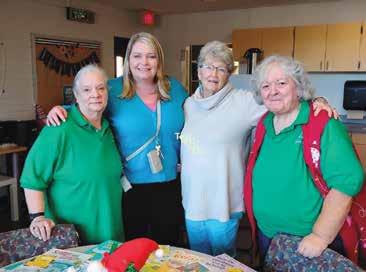







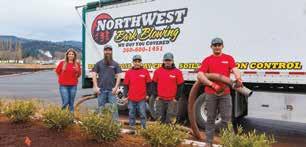




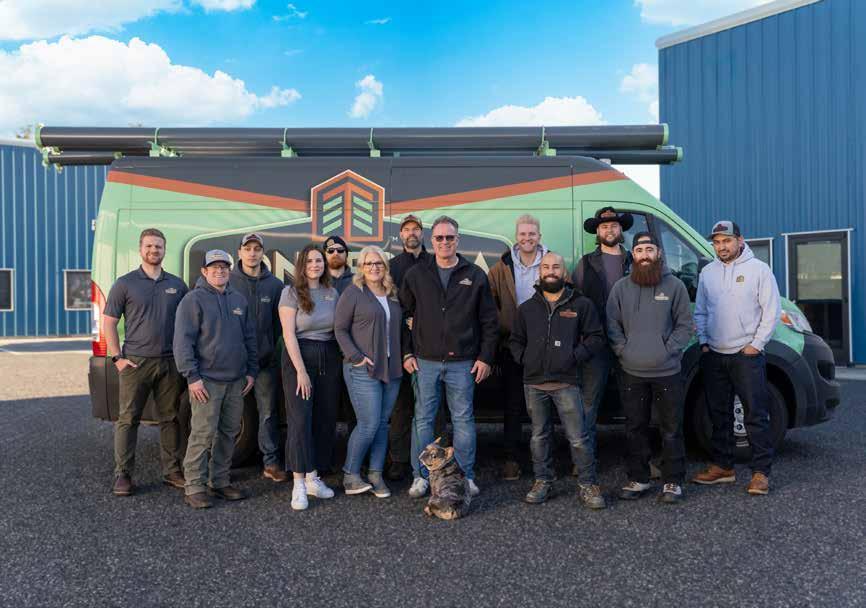



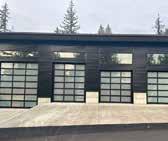










By Visit Vancouver
Spring in Clark County brings an array of floral displays. From dazzling tulip fields to delicate cherry blossoms, the area’s gardens and trails offer breathtaking sights for flower enthusiasts and casual admirers alike. Discover the best spots in and around Vancouver, where spring’s beauty is on full display.
Just north of Vancouver along I-5, the Holland America Flower Gardens in Woodland (1066 S. Pekin Road) offers a serene tulip experience from late March through April. Visitors can stroll past vibrant blooms and take home U-Pick tulips for just 50 cents per stem.
Hulda Klager Lilac Gardens
Nearby, the Hulda Klager Lilac Gardens (115 S. Pekin Road) surround an 1889 Victorian farmhouse with fragrant purple and white blossoms. Best seen during the Lilac Days event leading up to Mother’s Day, this garden offers a peek into history along with plants for purchase.
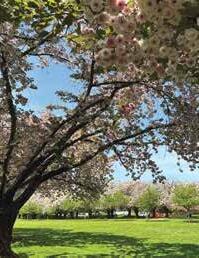
In Vancouver, cherry blossoms at Clark College (1933 Fort Vancouver Way) and Officers Row create a picturesque scene from late March to April. These trees, a 1990 gift from Japan, symbolize an enduring bond celebrated each year at the Sakura Festival (April 17, 2025).
At the Fort Vancouver National Historic Site (1001 E 5th St), visitors are greeted by a meticulously maintained heirloom garden reflecting the mid-19th-century Hudson’s Bay Company settlement. From spring through early fall, volunteers share insights into this vibrant piece of history.
For a wilder bloom, Lacamas Heritage Trail (NW Lake Rd at State RT 500, Camas) showcases the stunning Camas Lily in early May. Meandering through 312 acres of rocky meadows and shoreline, this trail is a haven for walkers, joggers and cyclists. As spring unfolds, these breathtaking locations invite visitors to Clark County’s floral wonders, promising a season of beauty and renewal. Whether you’re drawn to the vibrant tulip fields, fragrant lilacs, or delicate cherry blossoms, Clark County’s springtime blooms offer a feast for the senses. Take a stroll, soak in the colors, and embrace the season’s fleeting beauty before it fades.
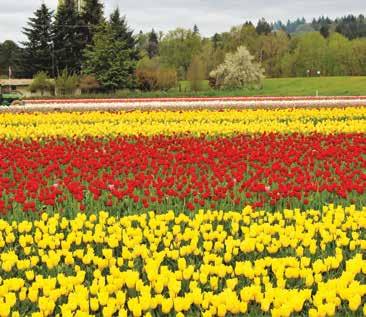
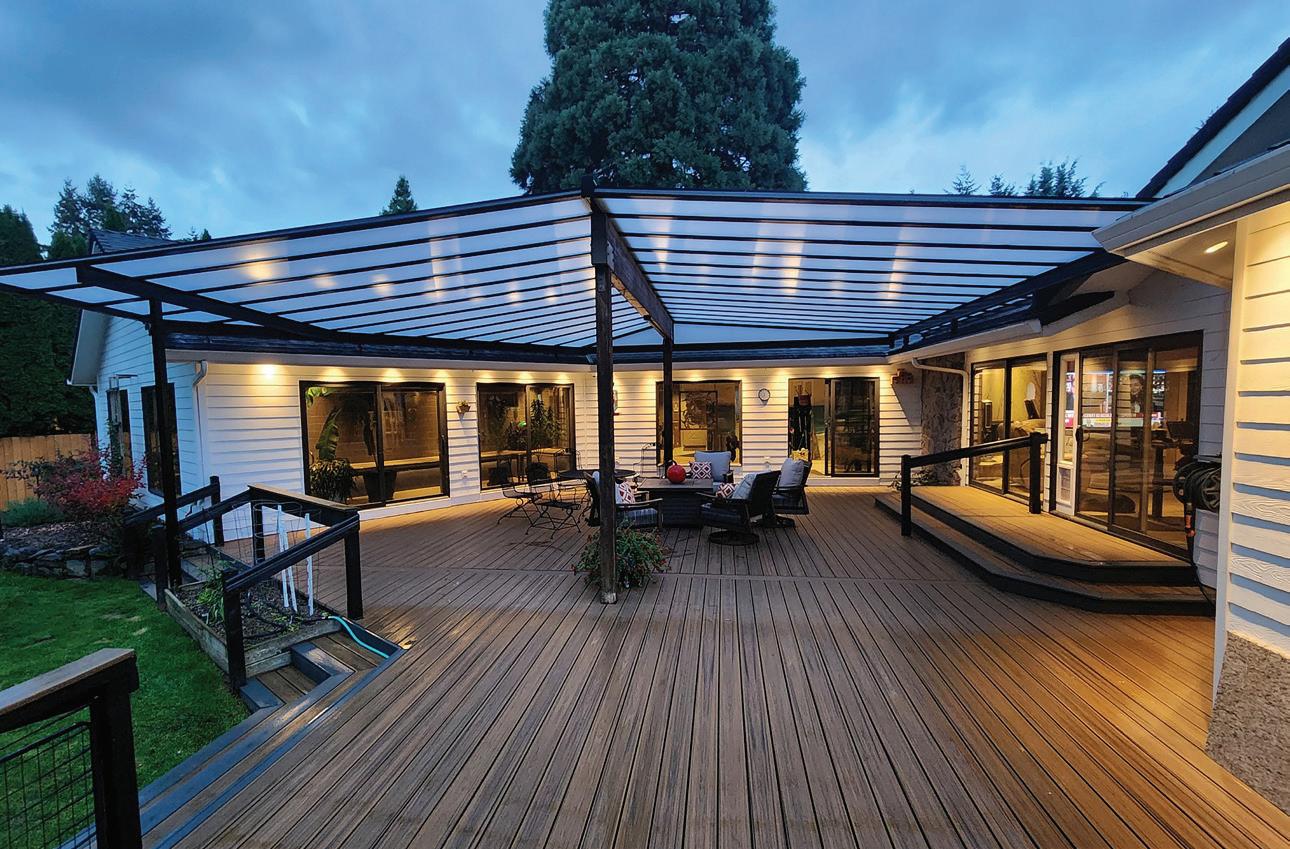




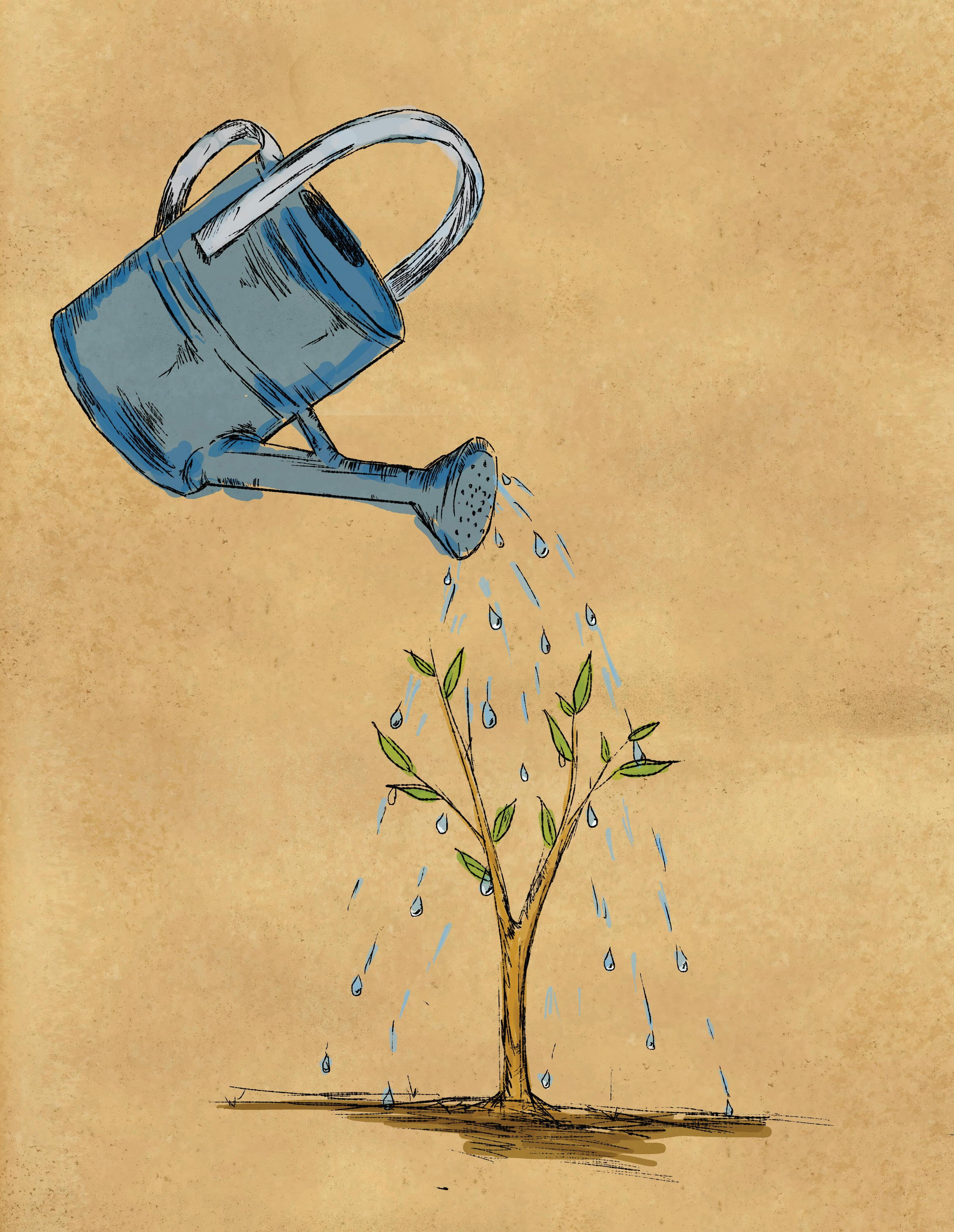
By Robert Matsumura, Active Media
Every year on April 22nd, millions of people around the world celebrate Earth Day, a day commemorating environmental protection and raising awareness about our planet’s well-being. But how did Earth Day come about? The story of Earth Day is both fascinating and inspiring, a testament to how a collective push for change can have a lasting impact.
Earth Day actually dates back to the late 1960s when environmental concerns swelled across the United States. Issues of water pollution, air quality, pesticide use, and the loss of wildlife were looming large in the public consciousness. Rachel Carson’s 1962 book Silent Spring had already brought to light the dangers of pesticides, and a growing concern for the environment was beginning to take root.
It wasn’t until 1969, however, that the idea of Earth Day began to form. Senator Gaylord Nelson from Wisconsin — alarmed by the lack of political attention to environmental issues —vowed to take action. He envisioned a nationwide teach-in focused on the environment to engage the public and pressure politicians to embrace the environmental cause. Nelson drew inspiration in part from the student protests of the 1960s, which demonstrated how grassroots movements could galvanize the public and bring about real change.
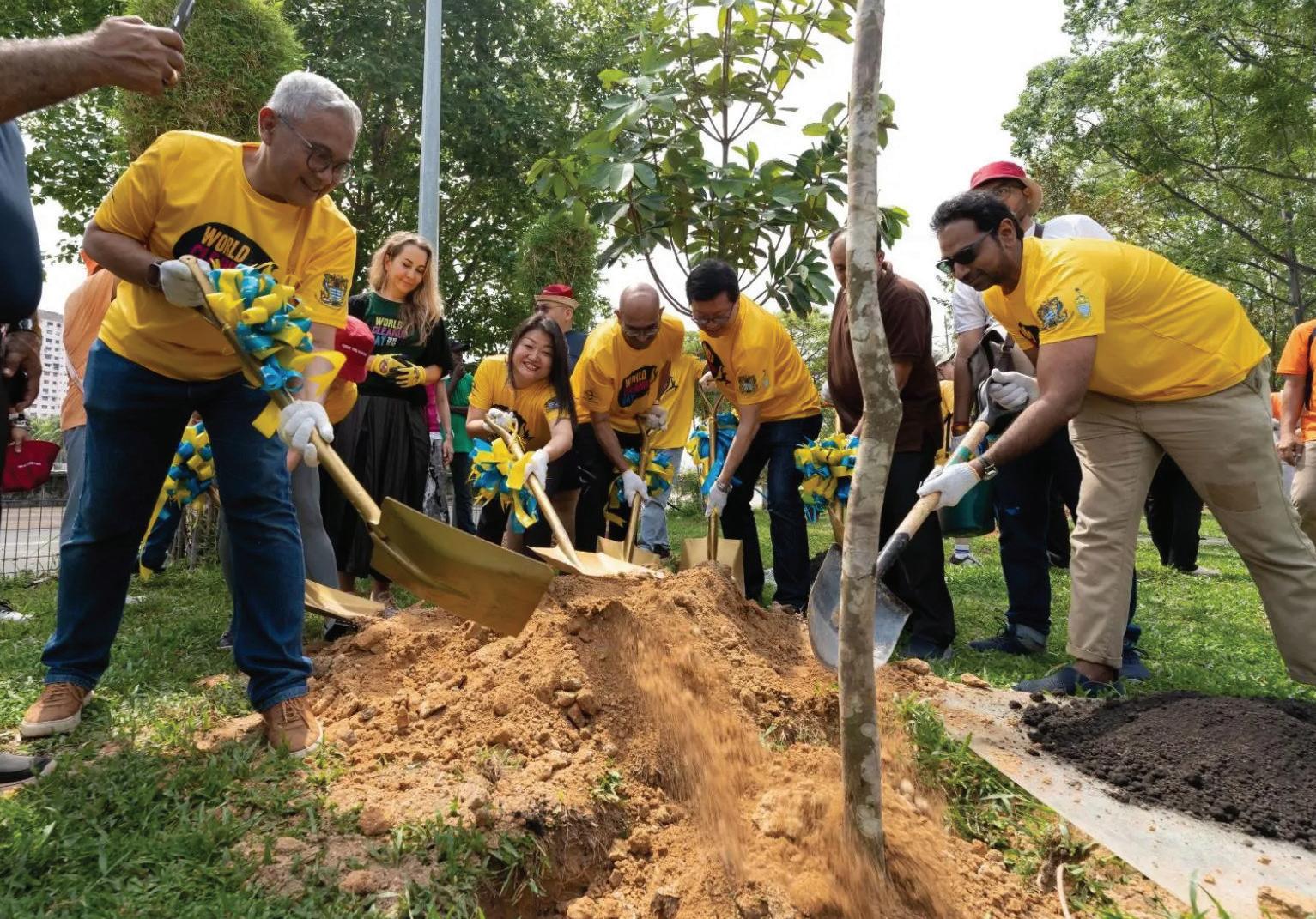
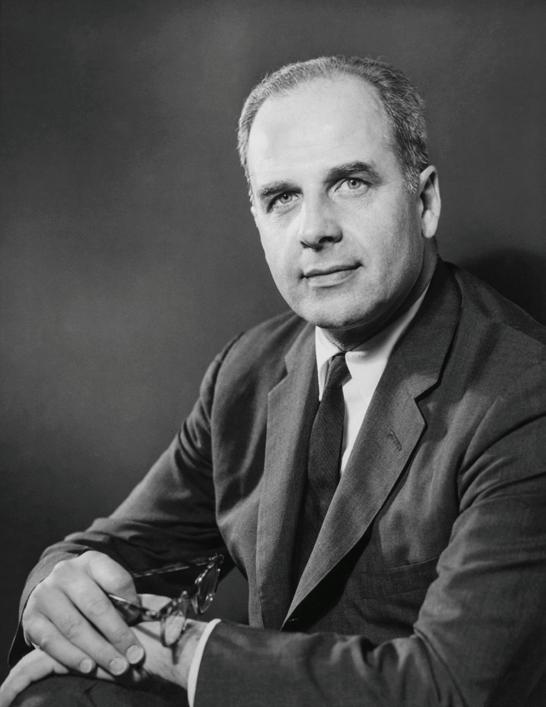
Earth Day was born on April 22, 1970. Nelson, with the assistance of activist Dennis Hayes, mobilized an astonishing 20 million Americans across the country — about 10 percent of the U.S. population at the time — who came together in rallies, teach-ins, and protests. The movement was not just about protesting, but about generating a dialogue around the need for environmental regulation and conservation.
The first Earth Day was a monumental success. People from all walks of life came together, including students, teachers, scientists, and activists. For the first time, environmental issues were discussed on a grand scale, clearly showing that protecting the Earth was no longer a niche concern but one that deserved national attention.
The success of Earth Day extended far beyond rallies, however. Significant changes in U.S. policy resulted from this event. In the wake of the first Earth Day, Congress passed major environmental legislation, including the Clean Air Act, the Clean Water Act, and the Endangered Species Act. The Environmental Protection Agency (EPA) was also created in 1970. It was clear that public opinion had shifted, and lawmakers took notice.
Although Earth Day was born in the United States, its message resonated around the world. In 1990, Earth Day went international, with 200 million people in over 140 countries participating. Since then, Earth Day has continued to grow. Events now take place in countries across the globe, with the Earth Day Network actively coordinating the activities.
Today, Earth Day is more relevant than ever. As the planet grapples with climate change, deforestation, and diminishing biodiversity, Earth Day is a reminder that everyone has a role to play in protecting our environment.
So this April 22nd, whether you’re planting a tree, cleaning up a local park, or simply recycling a plastic container, remember that Earth Day is a day to celebrate the planet we all share, ensuring that it continues to be a healthy and enjoyable place for generations to come!

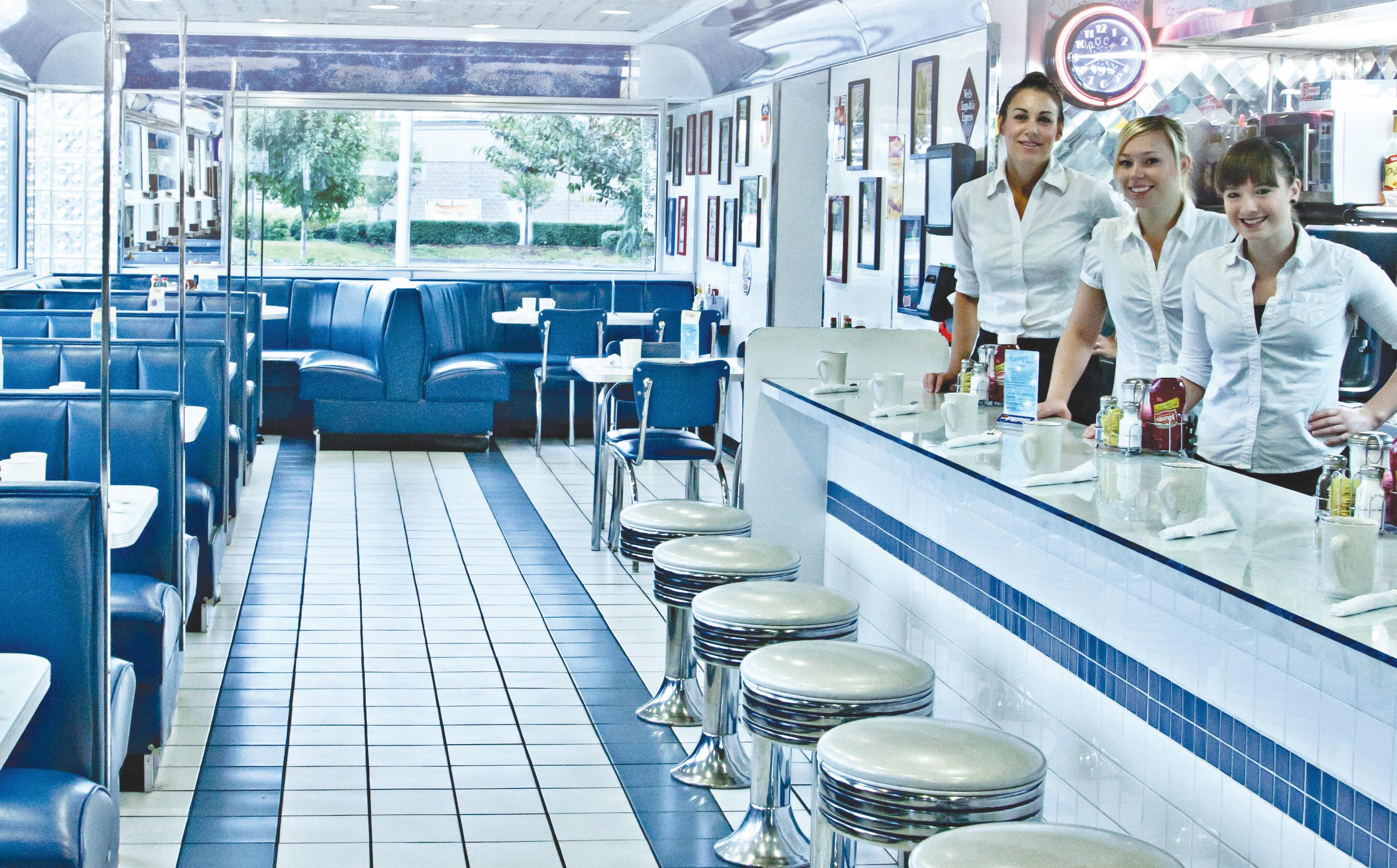











Community Chest and partners give greatly
The Camas-Washougal Community Chest and its partners, the Camas-Washougal Rotary Foundation and the Camas Lions Foundation, are pleased to announce the award of 39 grants totaling $154,550 to nonprofit organizations delivering services, exclusively, to children and families in Camas and Washougal. The Rotary commitment to Service Above Self also adds volunteers to the mix as they work to make a difference in our community.
Community Programs/Projects Funded in 2025
Akin East County Family Resource Center • Supports operations, including parent and youth education groups, emergency assistance, behavioral health and healthcare services. Provides food, diapers, hygiene items and a weekend food program.
Bookish • Supports the purchase and retrofit of a vehicle into a traveling library, bringing books for all ages to parks, schools, markets, clinics and more, expanding access to literature.
Boy Scouts of America • Cascade Pacific Council / Girl Scouts Troop 45703 • Help fund Campership Awards so families in need can send their Boy and Girl Scouts to summer camp.
Camas School District – Principal’s Checkbook (Camas Family Community Resource Center) • Provides essential support for students and families facing instability, ensuring their education and well-being. School counselors request assistance to help students.
Camas Farmers Market • Supports “Produce Pals,” a weekly program teaching children about food production. Participants earn $2 tokens to buy locally grown fruits and vegetables.
Camas Robotics Booster Club • Supports registration, transportation, and outreach for students in financial need to participate in STEM classes and activities in Camas and Washougal.
Camas Washougal Parent Co-op Preschool • Supports the operating budget, classroom supplies, and upkeep to provide a safe and nurturing environment for preschoolers to learn and play.
Camp Currie 5 • Supports repairs to two picnic shelters and the replacement of footbridge #4, covering permitting, materials and labor for the next phase of improvements.
Cascadia Technical Academy Foundation • Supports the purchase of required uniforms for needy students, and funding for food, transportation and emergency assistance during financial hardships. Also provides transportation during summer school. Columbia Play Project • Supports 10 free events in Camas and Washougal for children aged 0 to 12, providing access to highquality, educational and equitable play experiences.
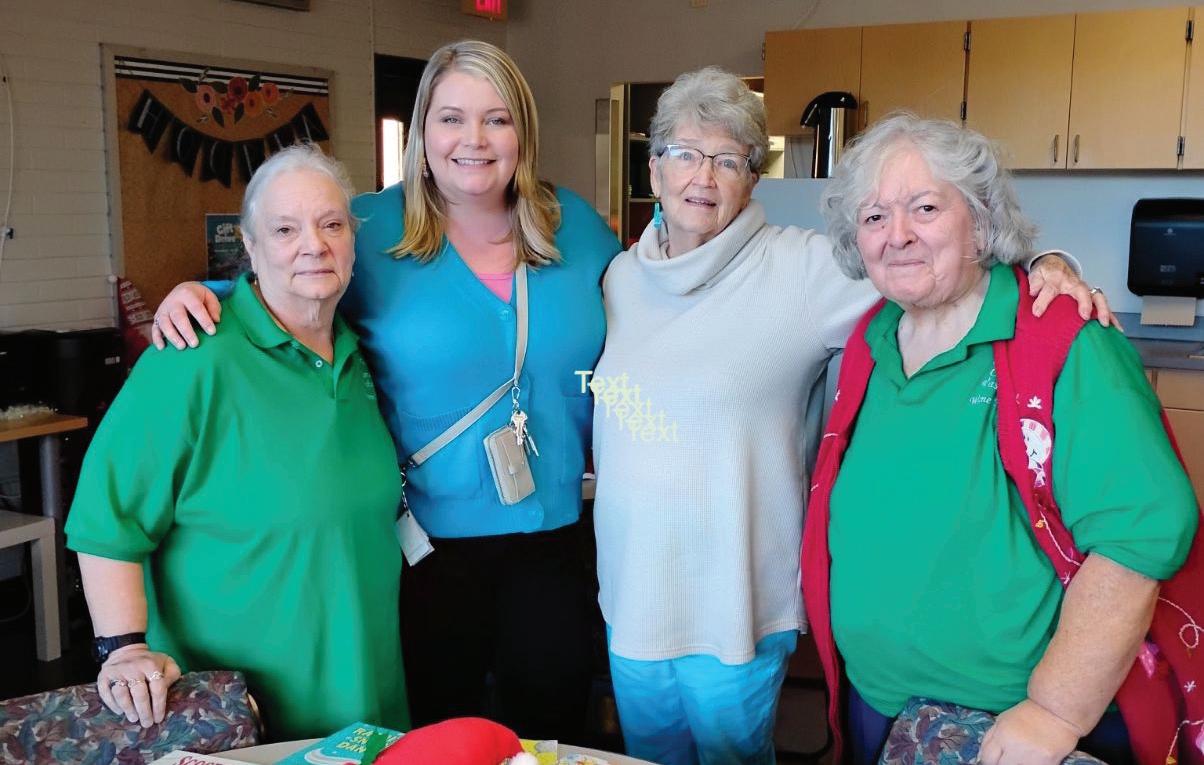
East County Citizen’s Alliance – Washougal Ivy League • Supports the purchase of tools to remove invasive species from Washougal parks and public spaces. Also covers liability insurance for volunteers, project managers, and website hosting services.
East County Student Travel • Supports travel expenses for an underprivileged student to explore American history and foster civic engagement through visits to Jamestown, Arlington, Washington DC, Gettysburg, New York City, and more.
Enspire Arts • Supports vibrant, interactive arts experiences that promote well-being and learning. The grant will fund insurance for participants or help cover operating expenses such as venue rental, supplies, artist fees, scholarships, and administrative costs.
Family Promise of Clark County • Supports the FP Cares program, which helps families prevent homelessness by providing rental assistance, back rent payments, security deposits, landlord mediation, and help with housing applications.
Fort Vancouver Regional Library Foundation – Washougal Branch • Supports the summer reading program, offering free literacy programs and incentives to improve reading comprehension, vocabulary, and writing skills for youth before the fall school year.
Friends and Foundation of the Camas Library • Supports the expansion of the Circulating Kits program, which provides Storytime To-Go kits for young children, Hands-on Hobbies kits for teens and Memory kits for individuals experiencing memory loss.
Friends of the Columbia Gorge • Supports the “Explore the Gorge” program, providing classroom lessons and outdoor environmental education for sixth graders at Jemtegaard and Canyon Creek Middle Schools in the Washougal School District.
General Federation of Women’s Clubs Camas – Washougal • Supports the purchase of age-appropriate books and educational materials for Pre-K and elementary classrooms in the Camas and Washougal School Districts to enhance reading skills.
Hathaway Boosters Club • Supports the repair or replacement of playground equipment and the purchase and installation of new equipment at Hathaway Elementary School.

Hope Learning Center • Supports scholarships for families unable to afford alternative education for their children and provides funding for one-on-one tutors.
Human Dignity Foundation dba Good Shepherd Manor • Supports the construction of a pavilion for residents receiving end-of-life care, providing an outdoor space to enjoy nature’s beauty, including birds, animals, trees, and fresh air.
Impact CW – St. Matthew Lutheran Church • Provides food and grocery gift cards to families in the Camas and Washougal School Districts.
Janus Youth Programs • Supports outreach and overnight stays for runaway youth in Camas/Washougal at risk of abuse and neglect, helping them return to safe housing and services for stability.
Journey Theater Arts Group • Supports scholarships for six students from families facing financial hardship and funds American Sign Language interpretation for five show runs.
Kiwanis Camp Wa-Ri-Ki • Supports the Outdoor Environmental Education Program, offering campers activities that promote healthy living, personal growth, leadership, nature-based skills and community involvement.
Komak • Provides emergency financial assistance to individuals typically selfsupporting but unable to work during cancer treatment, helping prevent bankruptcy, eviction, homelessness and food insecurity.
Lacamas Watershed Council • Provides volunteer training, plus water quality monitoring equipment and testing supplies for collecting samples in the Lacamas watershed.
Lower Columbia Estuary Partnership • Supports the Students Outdoor Science program, offering lessons and outdoor learning activities for youth, including habitat enhancement projects near Gibbons Creek, Steigerwald Lake National Wildlife Refuge, Campen Creek in Mable Kerr Park, and Lacamas Creek Trail and Park.
Meals on Wheels People • Supports the Senior Nutrition Program, ensuring older adults have access to nutritious meals in their neighborhoods, offering social support through friendly conversations during meal delivery, and providing enrichment activities to combat social isolation.
Pink Lemonade Project • Supports the Treatment Access Program, Pink Practicalities and Holiday Glow, three financial aid programs for individuals with breast cancer. These programs cover costs not typically covered by insurance.
REACH Community Development • Provides groceries, baby essentials, cleaning supplies, hygiene products, and basic household needs. Also funds school supplies and holiday food baskets for the Gateway Gardens and Towne Square communities in Washougal.
ReFuel Washougal • Supports the children’s summer meal program, funds supplies for a 10-year volunteer appreciation lunch and helps purchase a branded pop-up tent for community events to raise awareness of community needs and recruit volunteers.
St. Anne’s Safe Stay Program • Supports the operating expenses of the Safe Stay program, including cleaning of port-apotties, use of outdoor electrical outlets, WiFi, showers, laundry and the kitchen.
The Little Wings Library • Supports the building of three little libraries in underserved areas and funds the purchase of at least 150 youth and teen books for each library.
Unite! Washougal Community Coalition • Supports Club Unite! at Jemtegaard and Canyon Creek Middle Schools; the Positive Community Norms project at Washougal High School; the “Love Your Life” campaign in Washougal; the Breathe Easy youth coalition; and the Support Our Ambassador Youth Program.
Washougal School District – Principal’s Checkbook • Assists school principals in providing support for low-income or homeless students, including an Adult Transition Program for students with disabilities. Also provides shoes, clothes, hygiene
products, food for Panther Den, and a mobile laptop cart for families lacking access to technology and internet services.
Washougal SAFE • Helps fund transportation costs (gas cards, bus passes, tire repair, and small engine repairs), emergency assistance for rent, deposits, utilities, and motel vouchers. Also provides funding for extracurricular activities, including musical instruments, uniforms, and participation/travel fees.
West Columbia Gorge Humane Society • Helps to keep pets and people together during hardship, crisis or emergency. Services include a pet food pantry, temporary boarding, impound/owner surrender fee relief and veterinary assistance.
Inter-Faith Treasure House • The Inter-Faith Treasure House requested $14,000 to replace their cargo van, which was deemed beyond repair by their auto shop. The van is crucial for efficiently moving food in pallet-size quantities, saving time and reducing strain on volunteers. The CWCC Board approved the emergency fund grant on Dec. 20, 2024. The replacement van made its first food pick-up from the Clark County Food Bank on Jan. 27, 2025.
Camas-Washougal Rotary Foundation
Camas Lions Foundation
GP Foundation
GP employees
Camas School District employees
City of Camas employees
City of Washougal employees
Port of Camas-Washougal employees
The Standard Insurance Foundation
Windermere Foundation
Watercare Industrial Services
Scan code for more details and donation forms.
The CWCC, CWRF and CLF are registered 501(c)(3) nonprofit organizations for federal charitable tax deduction purposes.




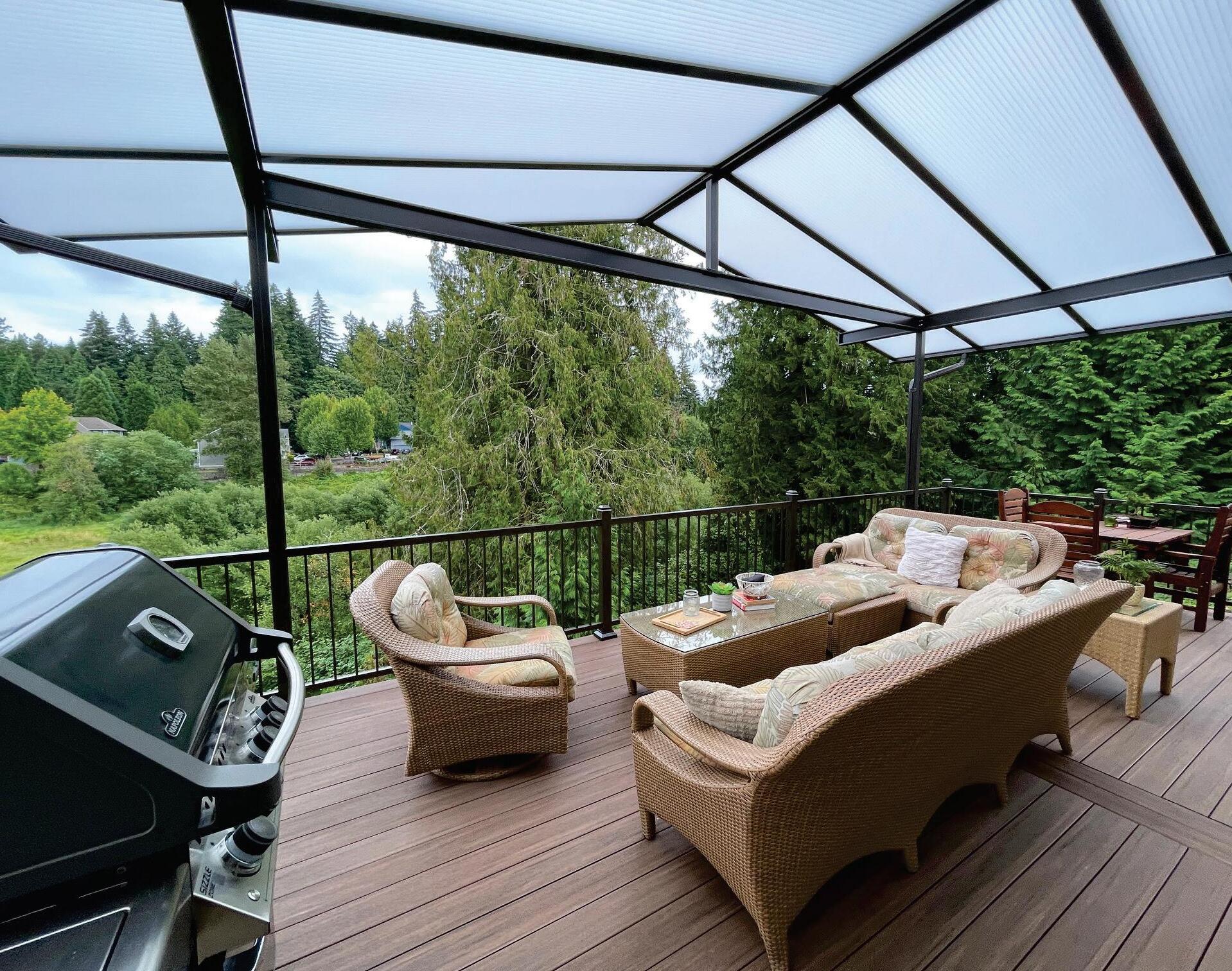
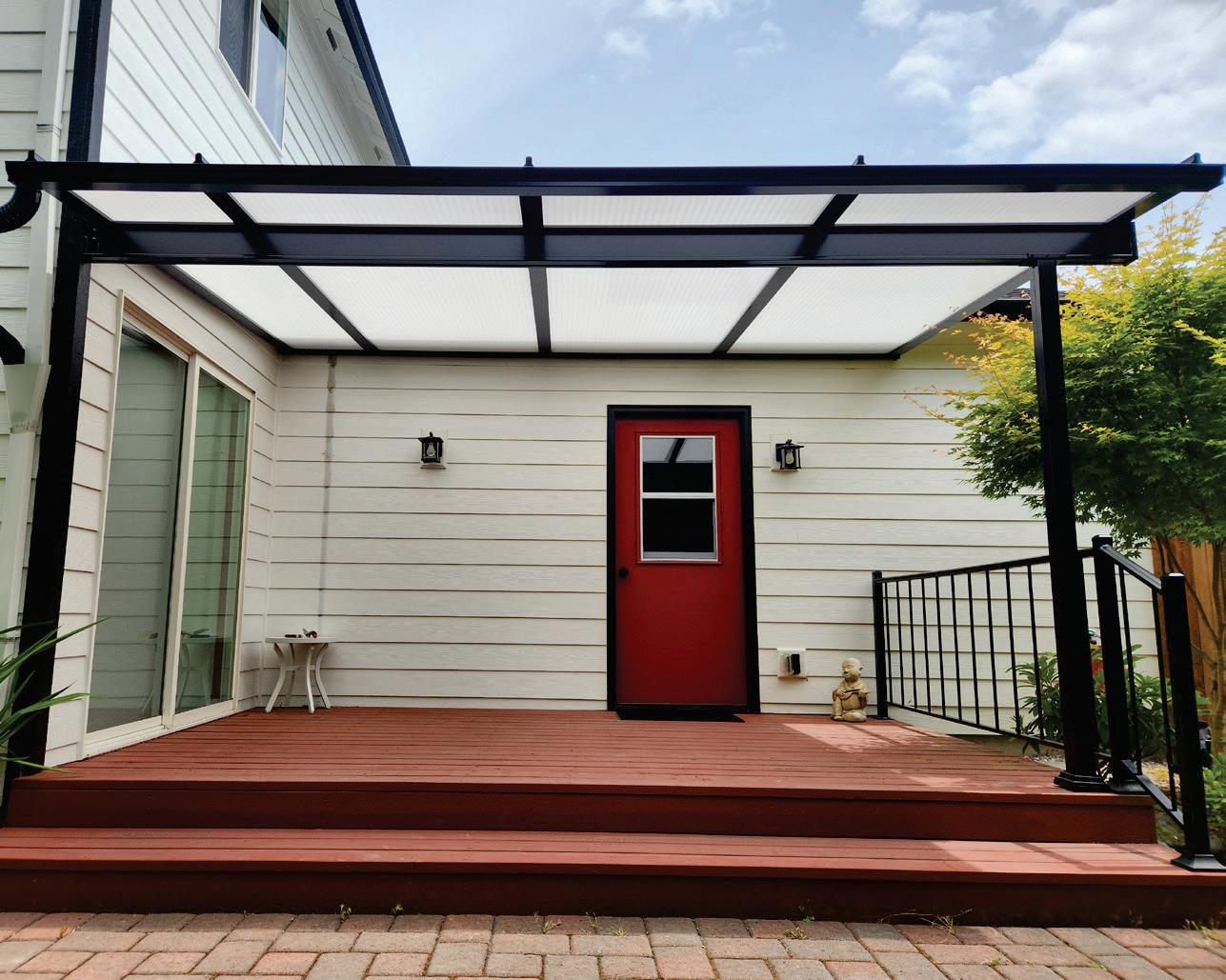

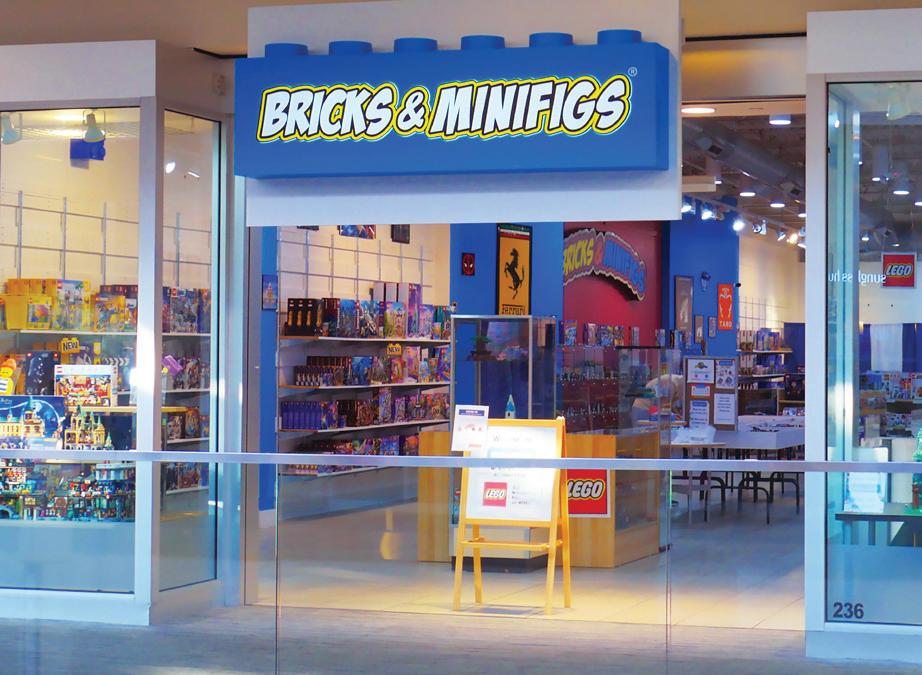
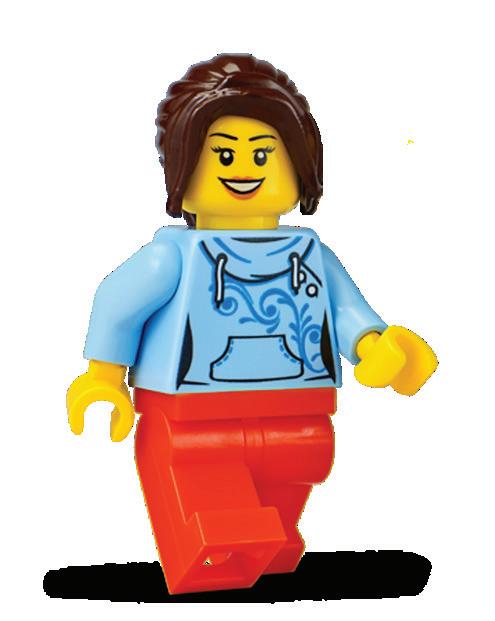

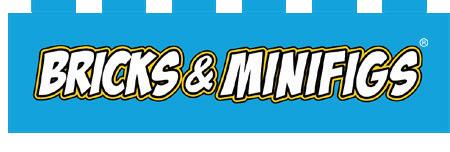


By Oregon Black Pioneers
Markus Lopeus is one of the earliest-known people of African descent to set foot in Oregon. Lopeus was a native of Cape Verde, a volcanic archipelago located 400 miles west of the North African mainland. The Portuguese discovered the islands in the 15th century and began to establish a permanent presence there. Enslaved Africans made up the majority of the islands’ population – but there was also a population of free Africans, including the Lopeus family.
In 1787, American ship captain Robert Gray set off from Boston in the sloop Lady Washington for his first voyage to the Pacific Northwest. Gray, along with Captain John Kendrick of the brig Columbia, were bound for the Pacific Northwest in search of sea otter pelts to exchange in China for tea, silk, spices, and porcelain.
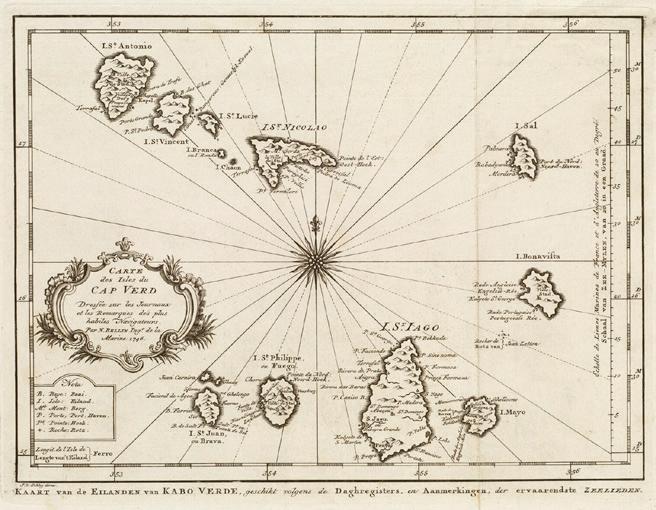
When the Lady Washington stopped in Cape Verde for water and supplies, Markus Lopeus volunteered to join the ship’s crew. Lopeus served as the ship’s cabin boy, suggesting he was a teenager or a young man. Despite his age, Lopeus had to participate in regular duties alongside the rest of the 12-14 member crew. According to 3rd mate Robert Haswell, Lopeus was cheerful, eager to help and well-liked by everyone aboard.

Photo by Rick Horn

In 1788, Lady Washington became the first American ship to make landfall on the Pacific coast. That August, the vessel reached Tillamook Bay, where they were greeted by members of a local Native village. The crew eagerly traded with the villagers on the beach.
Two days later, Lopeus was on shore cutting grass to feed the ship’s livestock. When he set down his cutlass, a Native man walked off with it. Lopeus chased after the man and grabbed him, which got the attention of the villagers. Several men surrounded Lopeus and stabbed him to death. Captain Gray’s crew quickly fled the beach and returned to their ship, firing their guns as they sailed away.
Today Markus Lopeus is remembered for his participation in the first American expedition to Oregon, and for being the first Black person to die in Oregon. His story demonstrates how Black people have been part of Oregon’s multiracial history from the earliest days.
Oregon Black Pioneers is Oregon’s only historical society dedicated to preserving and presenting the experiences of African Americans statewide. To learn more, and to support this nonprofit, visit oregonblackpioneers.org.
©Oregon Black Pioneers, 2025







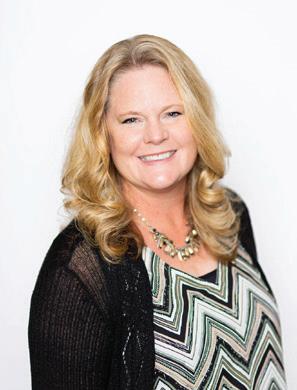
Hannah Carter
Cascade Inn Assisted Living Community
11613 S.E. Seventh Street, Vancouver 360-619-2962
cascadedcr@koelschsenior.com cascadeinnwashington.com

Laura Venneri
Holt Homes
1301 S.E. Tech Center Drive, #150, Vancouver 360-892-0514
laura@holthomes.com www.holthomes.com

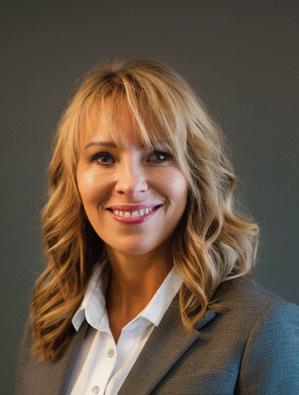
7202 N.E. Highway 99, #106, Vancouver 360-907-9422
hashby@carepatrol.com www.carepatrol.com/Vancouver

Serving seniors and building community through meaningful relationships is a passion of mine. Cascade Inn, a family-owned senior independent and assisted living community since 1958, has allowed me to do those things by assisting families to find a forever home for their loved ones. Additionally, I serve on the S.W. Washington Walk to End Alzheimer’s planning committee and am involved with the Clark County Quilters Guild serving local veterans, hospice patients, foster children and nonprofits. It brings me joy meeting new people and showing them the home away from home that I have found at Cascade Inn.
As the HR Office Manager at Holt Homes, affectionately known as “The Benefits Guru” and “Problem Solver,” I thrive on supporting employees and management through every aspect of HR. People often ask, “How do you like HR?” or “You must have some great stories!” But for me, it’s about making a meaningful impact. With empathy and a natural ability for listening, I take pride in identifying and addressing root causes of problems within the company. Whether revamping benefits, developing policies, guiding employees through FMLA or resolving conflicts, my goal is always to create practical solutions. I’m happiest knowing I’ve helped someone overcome a challenge, find clarity or feel supported in their work journey.
As an owner, operator and Certified Senior Advisor for CarePatrol of Vancouver, it has been a rewarding experience to help seniors and families. I started helping seniors in 2004 and I started CarePatrol because of the needs of my dad. He was at the hospital and passed at my house with hospice. Many people are in crisis needing to leave the hospital or a Skilled Nursing Facility, and they don’t know where to go. We are a team and work closely with families and clients to serve their needs. We offer resources to help with advising on Senior Living, Veterans’ assistance with Aid & Attendance, in-home care and other services in our community.





Simple Pleasures Events
12400 N.E. 27th Court, Vancouver
360-909-5632
courtney@simplepleasuresevents.com www.simplepleasuresevents.com


Mortgage Express
203 S.E. Park Plaza Drive, #205, Vancouver Cell: 360-601-3474 • Direct: 360-213-2596
sherrim@mtgxps.com sherrim.mtgxps.com

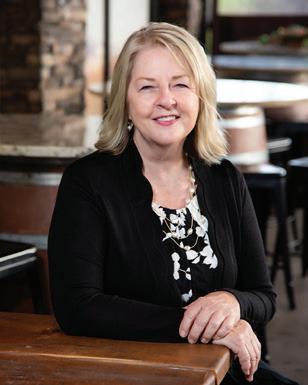
Pepsi
219 S. Timm Road, Ridgefield 360-903-7244
pamala.marini@pepsico.com www.pepsico.com
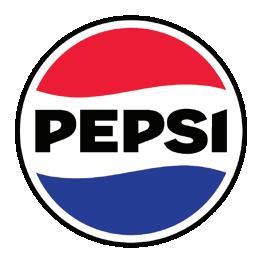



I founded Simple Pleasures Events over 20 years ago to make a difference in my community. A born multitasker and master of logistics, I oversee all projects and creative talent, meticulously tracking every detail in my color-coded notebooks — a system only my French Bulldog, Cooper, and I can truly decipher. With 25-plus years of experience, I’ve become a trusted partner to corporate and nonprofit clients, helping bring their visions to life. Viewing your event through the lens of a development director, I focus on donor engagement, cost reduction and unique fundraising opportunities. Last year alone, we helped clients raise $2.48 million, a testament to our commitment and impact.
I am a mortgage loan officer with Mortgage Express, a Pacific Northwest-based lender specializing in mortgage loans. With quick turnaround times and competitive rates, we ensure a smooth process while keeping borrowers informed. We offer a variety of lending programs to meet your home financing needs. The most rewarding part of my job is helping clients achieve their goals, whether it’s purchasing a home, refinancing, consolidating debt or pulling cash out for investments. I strive to make the process stress-free with top-tier customer service. Most of my business comes from repeat clients and referrals, and I take pride in being available seven days a week to guide them every step of the way.
Throughout my career, community support has been a cornerstone of my success, and I’m passionate about continuing to make a positive impact. Currently, at the local Ridgefield Pepsi location, I have the opportunity to bring my passion for community support to life. I work alongside a team of local experts who are dedicated to helping businesses grow and thrive. With a shared commitment to business prosperity, we focus on providing solutions and fostering strong, mutually beneficial relationships within the community.
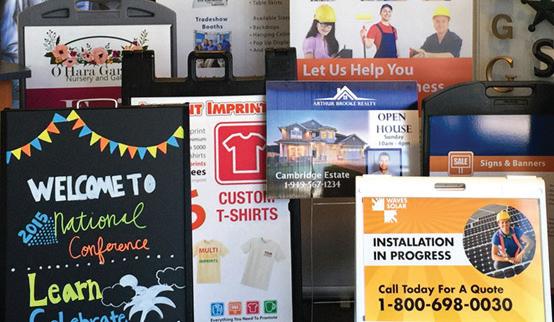

A perfect movie for springtime, this is an adventurous modern retelling of Beatrix Potter’s beloved classic, full of energy and sweet humor. The story follows the mischievous Peter Rabbit as he and his rabbit siblings wage a rivalry with Thomas McGregor for control of their country garden. With gorgeous animation, a charming English countryside, and a story full of slapstick comedy, the movie captures the air of renewal and adventure that defines spring. Unlike the original books, where old Farmer McGregor is the rabbits’ main adversary, this movie introduces Thomas McGregor, his great-nephew. A meticulous cityslicker from London, Thomas inherits his late uncle’s farm and initially wants to sell it — until he discovers Peter and his family invading the garden. What follows is a ridiculous rivalry between Thomas and the rabbits. The movie offers a surprisingly heartfelt journey about family, friendship, and learning from your mistakes. Starring James Corden, Rose Byrne, Domhnall Gleeson, Margot Robbie, Daisy Ridley, and Elizabeth Debicki. Rated PG for some rude humor and action.


Few movies capture spring quite like The Sound of Music. The story follows Maria, a free-spirited postulant (woman training to be a nun), who is sent to be the governess for seven von Trapp children. Through music, kindness, and an unshakable zest for life, Maria breathes new life into the family — just as Austria faces the impending rise of the Nazi regime. The stunning outdoor cinematography, from the lush meadows to the blossoming romance between Maria and the Captain, makes the movie feel as fresh and invigorating as spring itself. And this is more than just a picturesque musical — as the von Trapps face difficult choices under Nazi occupation, their courage and devotion to each other creates a powerful message of hope and resilience. The movie somehow blends joy, romance, and suspense, making it an unforgettable experience. Starring Julie Andrews, Christopher Plummer, Eleanor Parker, Richard Haydn, and Peggy Wood. Rated G, but please note themes of Nazi occupation, strict parenting, traditional gender roles, and religious life.


Young love, springtime in high school, and prom. A loose, modern adaptation of Shakespeare’s comedy “Taming of the Shrew,” 10 Things is an iconic ’90s teen rom-com. The story follows Kat, the “shrew” (a smart, independent, rebellious woman) and her sister Bianca. Bianca wants to date but can’t until Kat does. Cameron, a new student, falls in love with Bianca but she wants to date Joey, a rich bad boy. So Cameron schemes with his friend Michael: convince Joey to pay moody outcast Patrick Verona to date Kat, thus allowing Joey to date Bianca (and unofficially allowing Cameron to date Bianca eventually). Like most rom-coms, there’s a relationship reversal — Patrick really falls for Kat, Bianca realizes that Joey is a jerk and Cameron is actually great. However, Kat soon discovers the scheme and is heartbroken. But in true rom-com fashion, there’s a dramatic reconciliation where Kat confesses her feelings for Patrick as well as the 10 things she hates about him. Starring Julia Stiles, Larisa Oleynik, Joseph GordonLevitt, Heath Ledger, and more. Rated PG-13 for crude humor, brief strong language, and some sexual references.
* The Spring Equinox, usually around March 20th or 21st, marks the day when daytime and nighttime are nearly equal in length, signaling the official start of spring in the Northern Hemisphere.
* Spring is crucial for plant life because it’s the time when many plants break dormancy. As temperatures rise and days lengthen, plants begin to bloom and grow, using the energy from the sun to fuel their photosynthesis and bloom in vibrant colors.
* Many bird species migrate during the colder months and return in spring to breed. These birds follow seasonal patterns and rely on the availability of insects and plants that peak in spring to nourish themselves and raise their young.





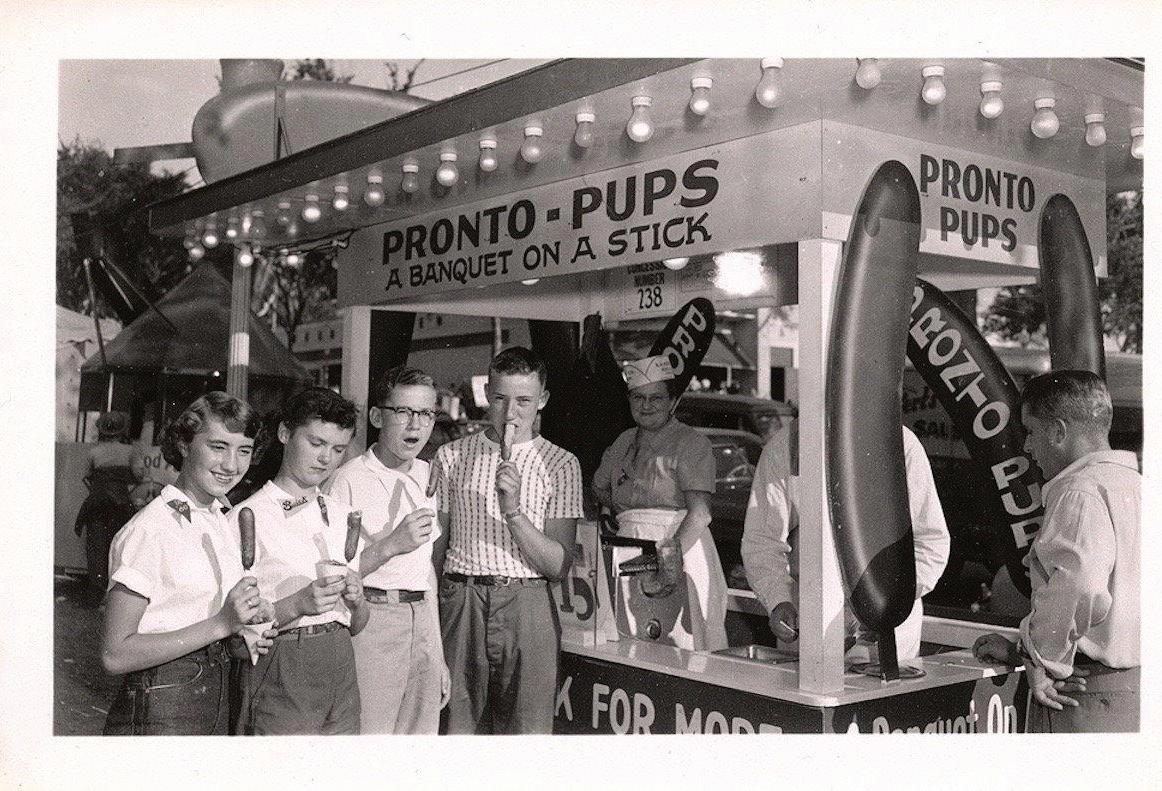
By Robert Matsumura, Active Media
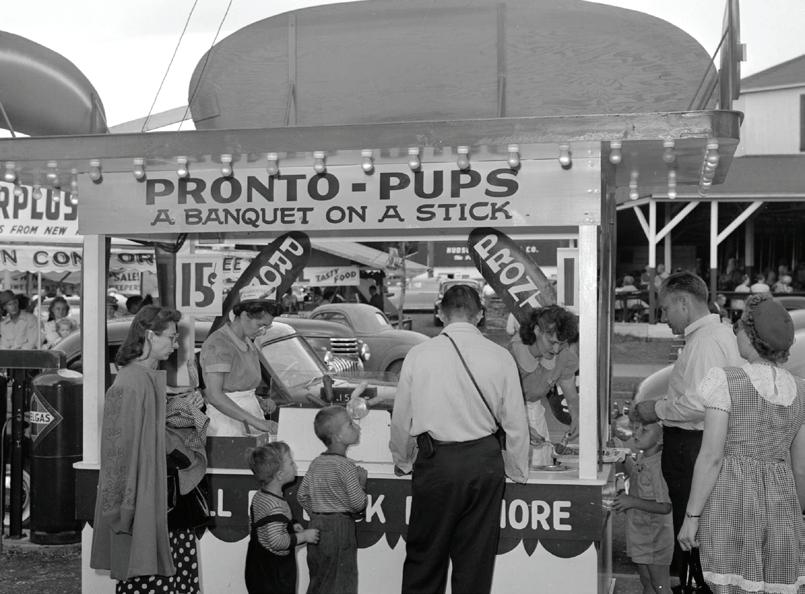
WWWhen you think of classic fair food, what comes to mind? Perhaps it’s cotton candy, funnel cakes, or caramel apples. For many Americans, the ultimate fair staple is the corn dog. And when it comes to corn dogs, one name stands out in the annals of fried food history: the Pronto Pup.
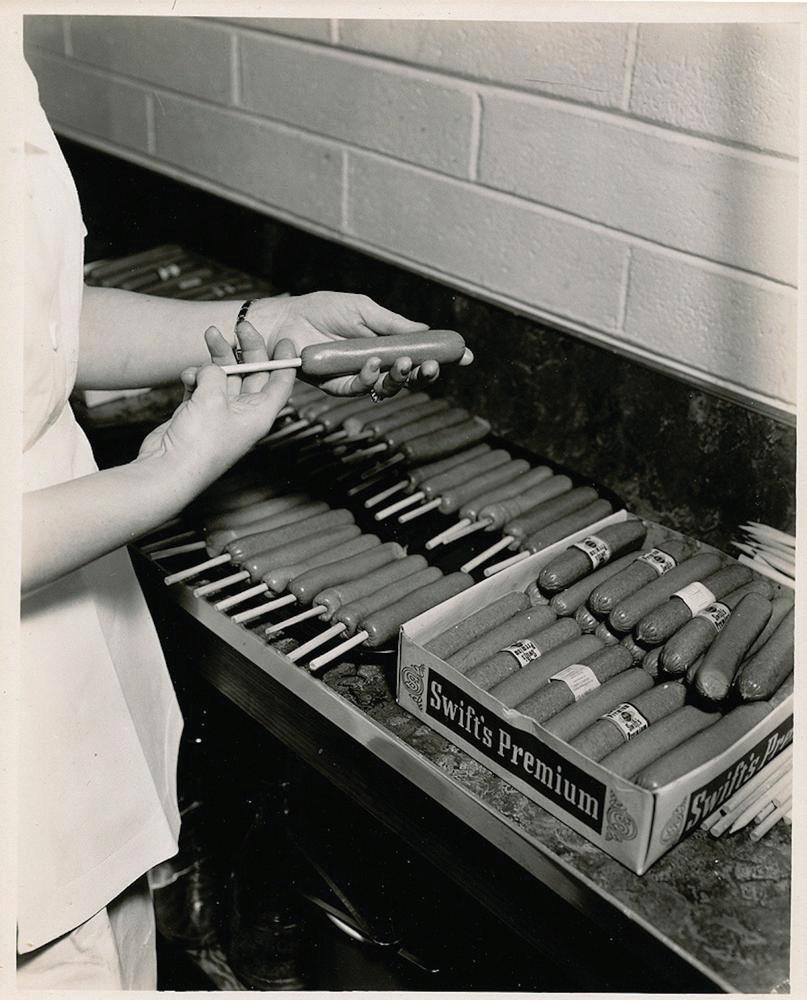
juicy hot dog encased in a crispy, fried shell was irresistible!
While you might think the Pronto Pup’s origins trace back to the bustling state fairs of Texas or Minnesota, it is the town of Rockaway on the Oregon Coast that claims the distinction. In the late 1930s George and Versa Boyington, a couple who operated a hot dog stand, found themselves at the mercy of Oregon’s notoriously wet weather. The rain would soak the buns, leaving them with soggy sandwiches and frustrated customers. Undeterred, George experimented with dipping hot dogs into a thick batter made from flour and frying them. The result? A crispy, golden, portable treat that was rain resistant — the perfect snack for the Pacific Northwest’s soggy unpredictable weather.
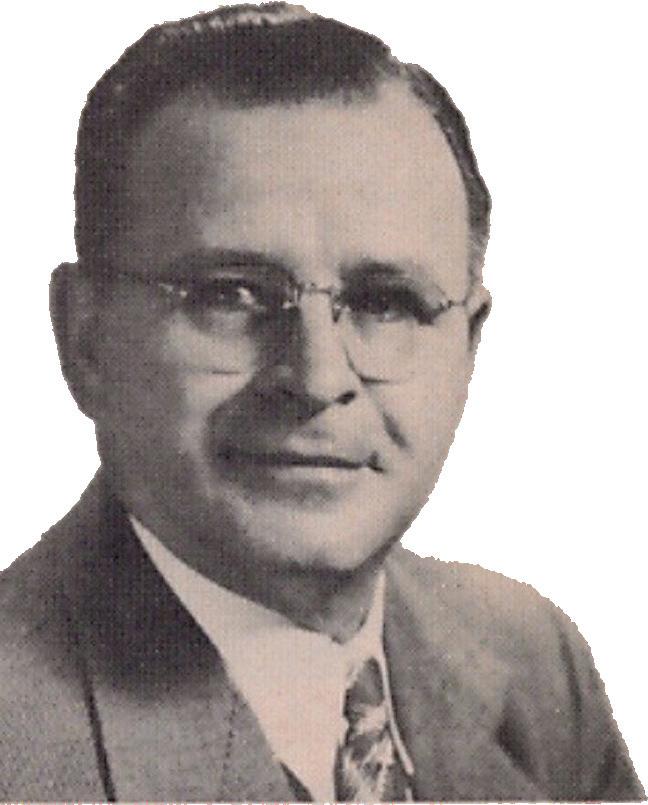
The Boyingtons desired a name that conveyed both the speed and convenience of their new invention.
After a brainstorming session they landed on “Pronto Pup,” evoking the quickness of serving and eating
More than just inventors, the Boyingtons were also savvy entrepreneurs. Recognizing the potential of their invention, they franchised the Pronto Pup, selling the equipment and batter mix to aspiring vendors across the country. By the 1950s, Pronto Pups had become a staple at fairs, carnivals and drive-ins nationwide.
The difference resides in the batter. While corn dogs are typically made with a cornmeal-based batter, Pronto Pups use a flour-based batter. The result is the Pronto Pup has a lighter, more pancake-like texture, versus its cornbread-coated cousin.
As fairs and festivals exploded in popularity throughout the mid-20th century, so too did the Pronto Pup. Its portability and affordability made it a perfect fit for the evolving American lifestyle. Drive-ins, a cultural hallmark of the

1950s, also embraced the Pronto Pup, offering it on their menus alongside burgers and shakes.
The Boyingtons continued to refine their business model, focusing on quality and consistency. Vendors were required to use the official Pronto Pup batter mix, ensuring that every Pronto Pup, whether sold in Oregon or Omaha, tasted just right. This commitment to quality also helped establish the Pronto Pup’s reputation as a consistent and delicious snack.

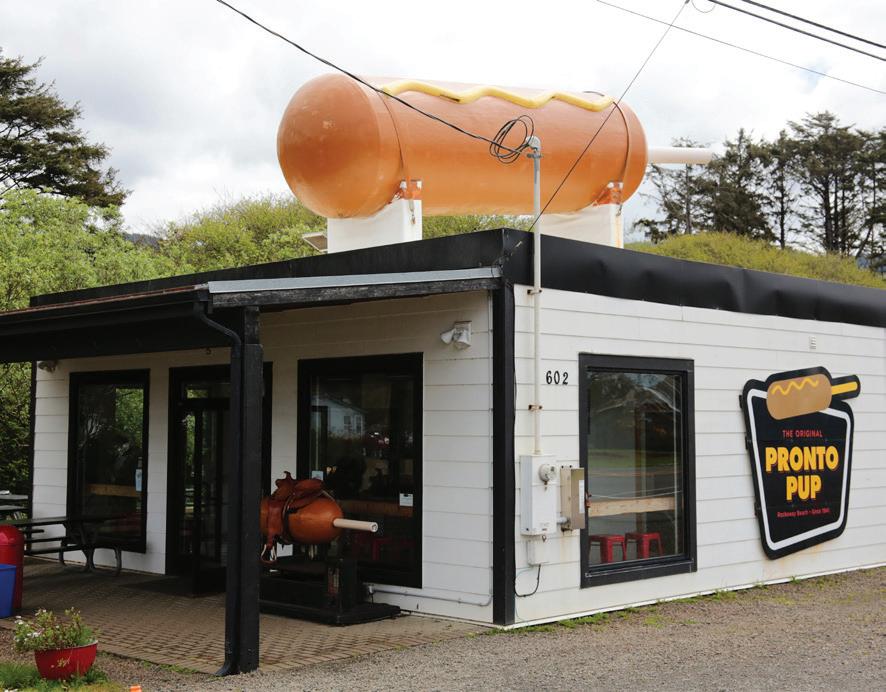
Of course, with success came competition. The Pronto Pup’s rise to fame spurred the creation of similar snacks across the country, most notably the corn dog. While many corn dog enthusiasts assert that the cornmeal batter adds a unique flavor, Pronto Pup loyalists insist that nothing beats the original flour-based recipe.
In Minnesota, the Pronto Pup’s popularity inspired fierce loyalty. At the Minnesota State Fair, an event that draws millions of visitors each year, Pronto Pups are sold at numerous stands and remain one of the fair’s most iconic treats. For many Minnesotans, the Pronto Pup isn’t just
What’s the Pronto Pup’s secret? What makes it so delicious? It’s all about the balance of flavors and textures. The hot dog provides a savory, juicy center, while the batter delivers a crispy, slightly sweet coating. When fried to perfection, the Pronto Pup achieves a delectable contrast that’s difficult to resist. Temperature and timing are critical in the frying process. The oil needs to be hot enough to cook the batter quickly without overcooking the hot dog. Too low a temperature, and the batter becomes greasy; too high, and it burns. Experienced vendors know that achieving the perfect golden brown color demands practice and precision.
American pop culture has embraced the Pronto Pup. It has been the star of food documentaries, fairground scenes in movies, even the occasional viral video. Rockaway Beach, the birthplace of the Pronto Pup, continues to honor its culinary legacy. Visitors to the town can stop by the original Pronto Pup stand, which operates to this day, and taste the Oregon classic that became a national favorite.
In recent years, food enthusiasts and vendors have begun customizing the Pronto Pup. Gourmet versions featuring artisan sausages, exotic spices, and unique dipping sauces have appeared at upscale food festivals and trendy
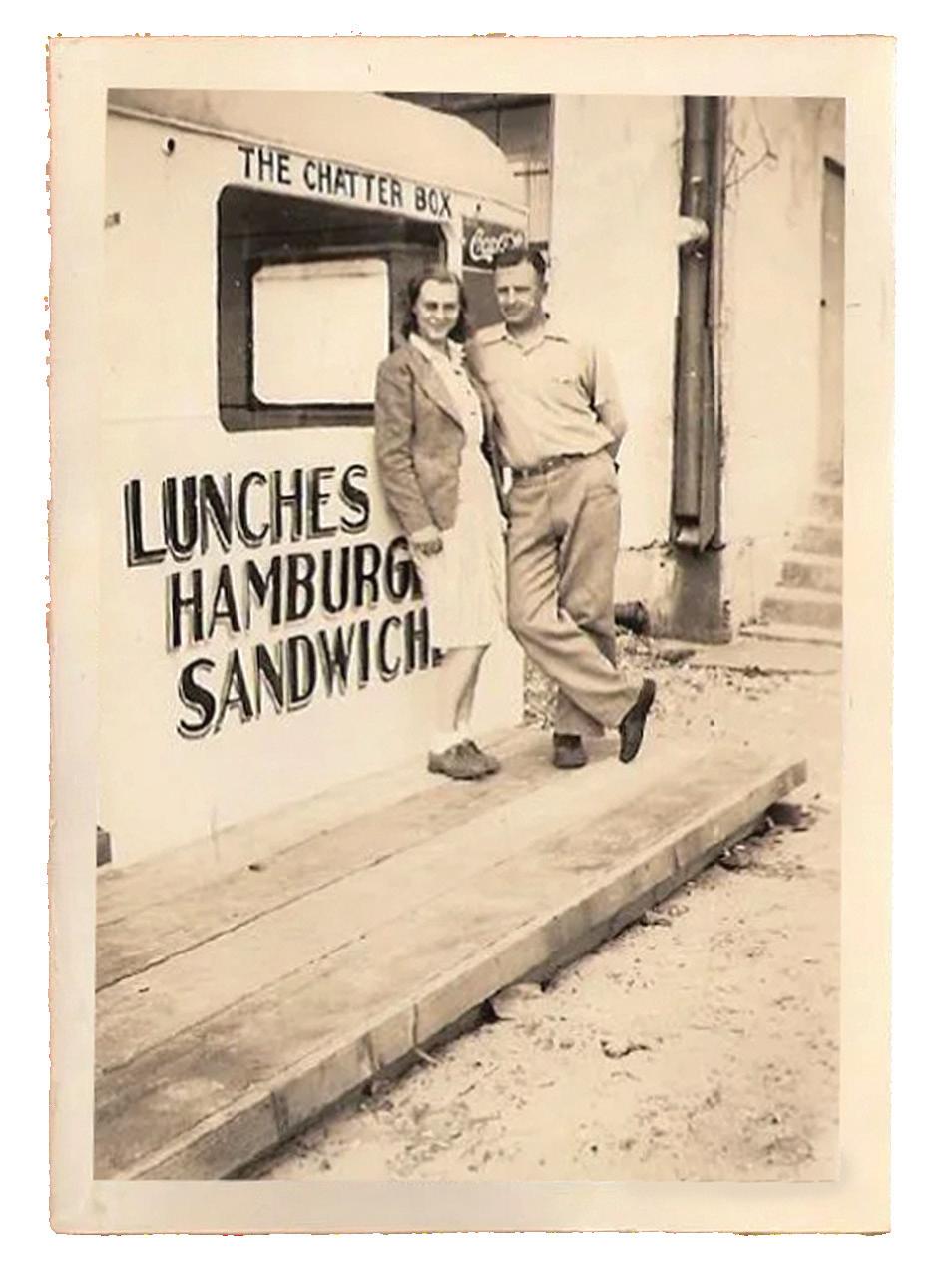
George and Versa Boyington
restaurants. However, even with these fancy variations, the core essence of the Pronto Pup — a simple, satisfying snack — remains the same.
Pronto
Today, the Pronto Pup is a cultural icon, particularly in the Midwest and Pacific Northwest. In Rockaway Beach, the Boyingtons’ creation is celebrated annually at the Pronto Pup Festival. Beyond nostalgia, the Pronto Pup’s story is a testament to the spirit of innovation. It’s a reminder that sometimes the best ideas come in response to the simplest of problems — and thinking outside the (soggy) bun.
The next time you’re enjoying a Pronto Pup, or even a corn dog, remember the Boyingtons, Rockaway Beach and the crispy creation that started it all. Whether you prefer yours with ketchup, mustard, or both, there’s no denying the enduring appeal of this quintessential American treat!
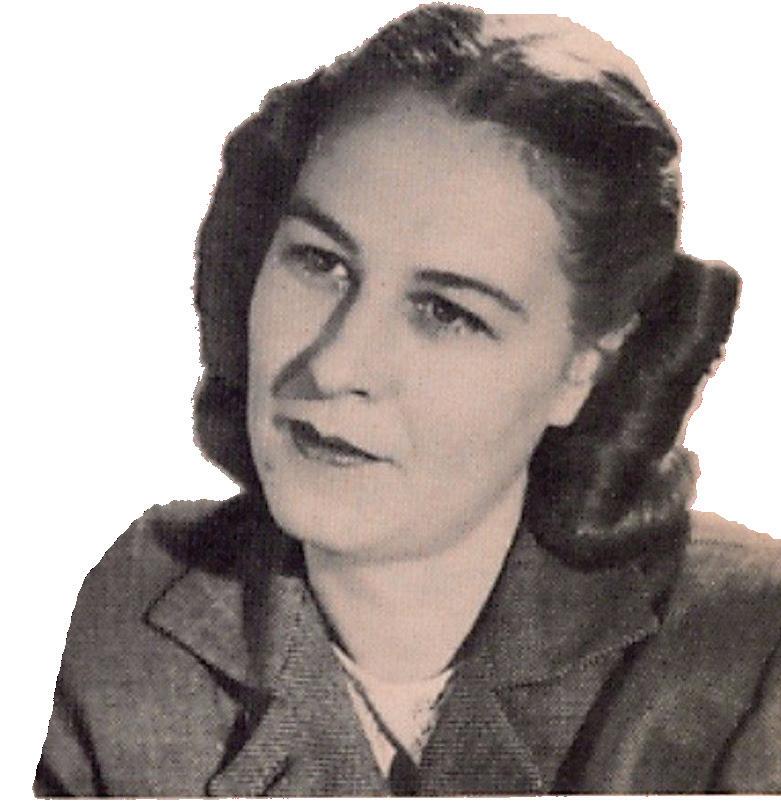
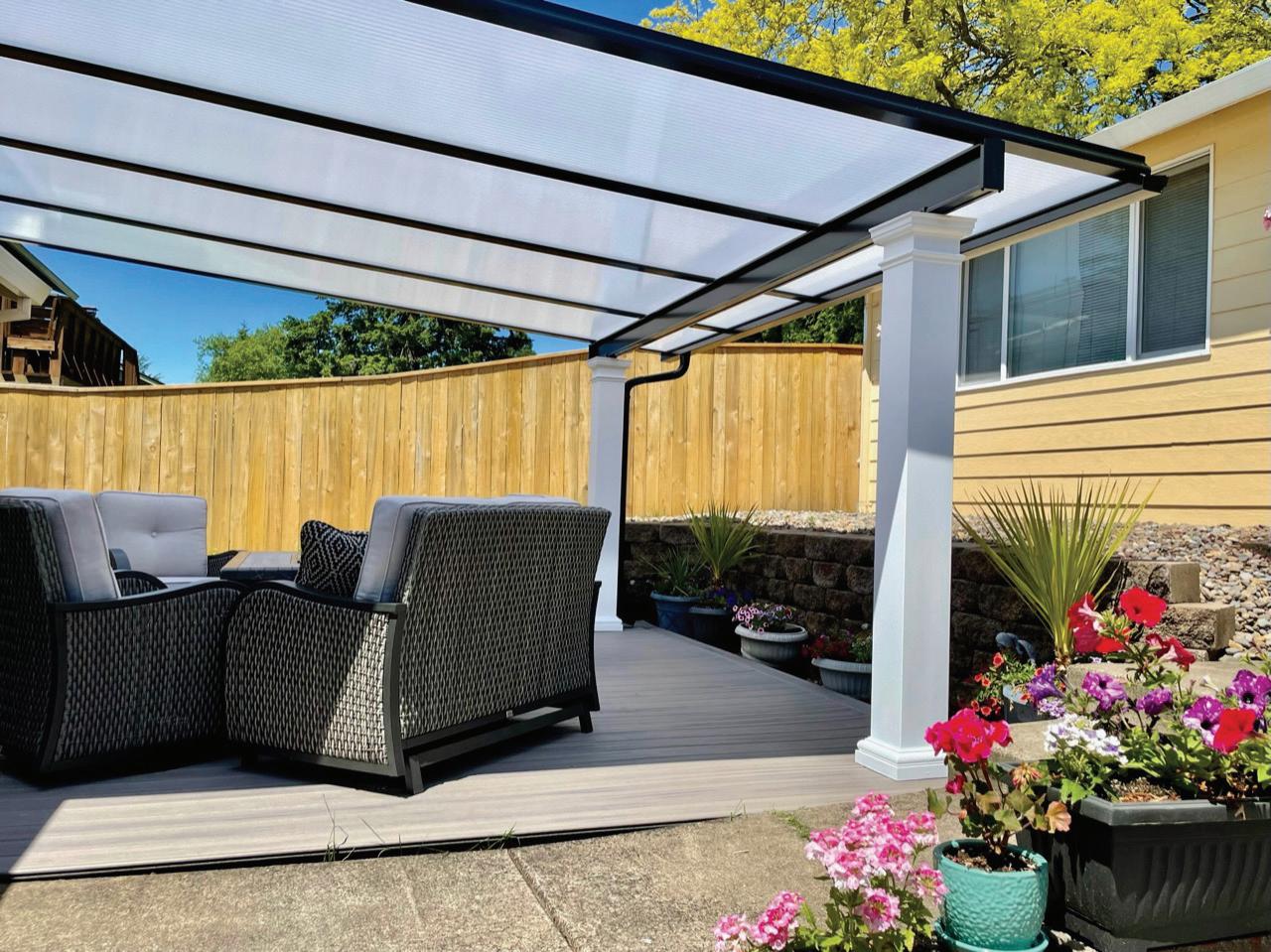




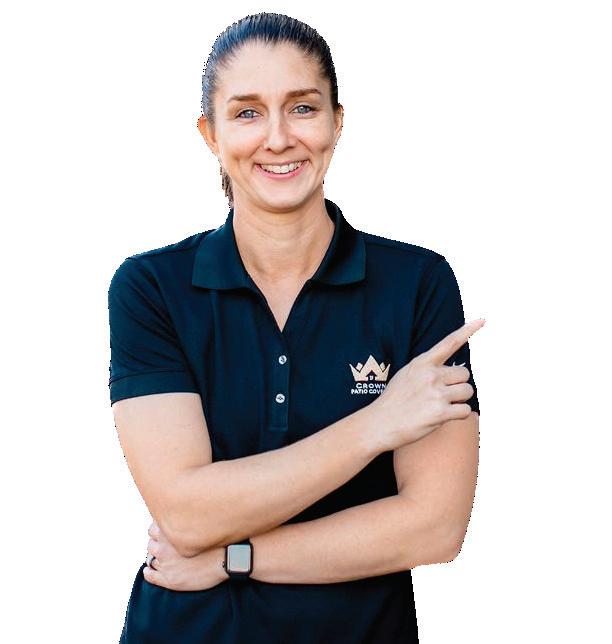



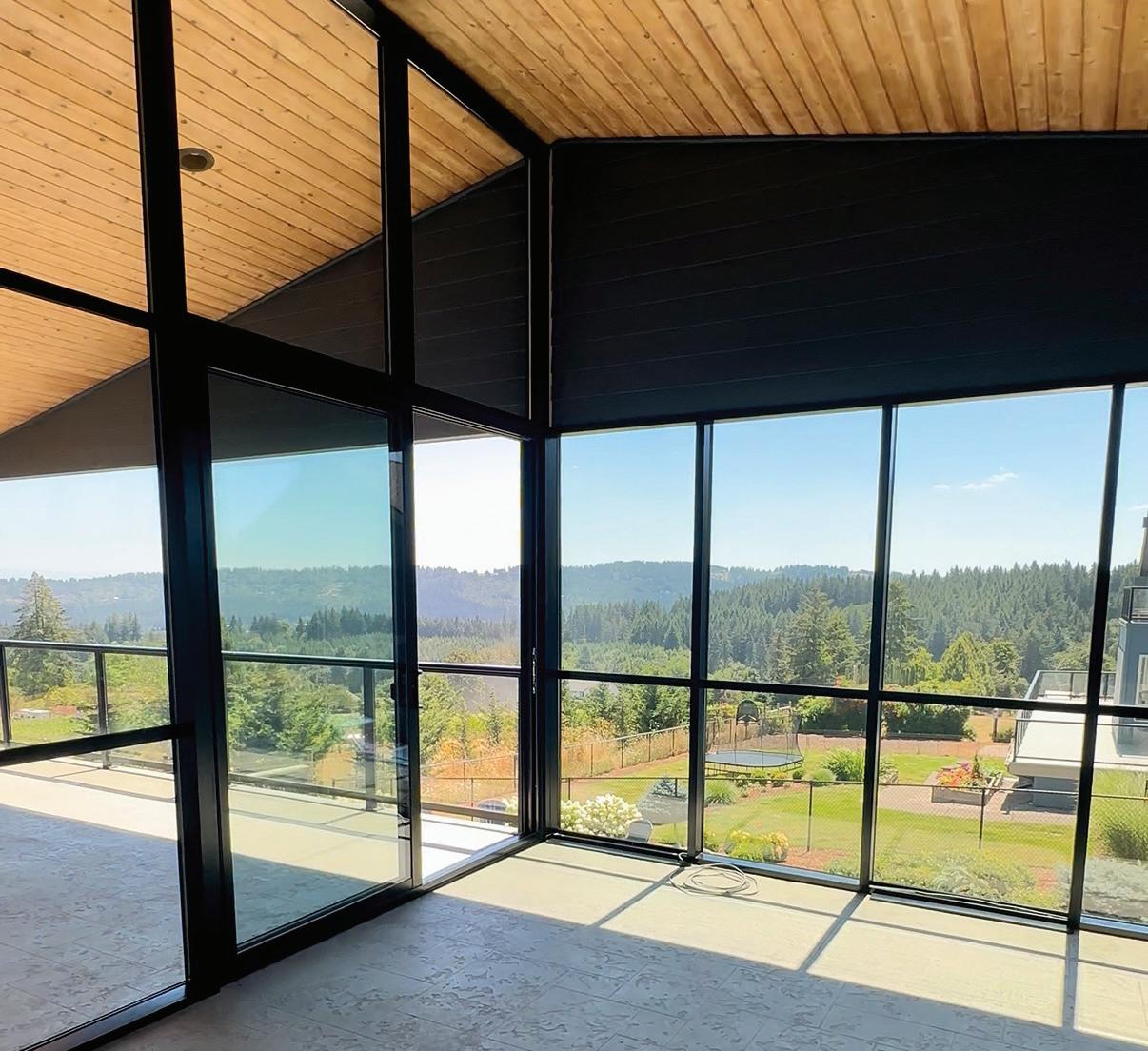

No job is too big!
No job is too big!


By Patti Jo Brooks, Active Media
By Patti Jo Brooks, Active Media
Photos by Lisa Kuhlman, Active Media
Photos by Lisa Kuhlman, Active Media
NNeed a bathroom or kitchen remodel? Call Revo Kitchen & Bath today at 360-838-0764 and take advantage of their spring discount prices! Revo Kitchen & Bath is a local family remodeling company specializing in kitchen and bathroom remodels. But they can also handle full home remodeling projects and additions.
eed a bathroom or kitchen remodel? Call Revo Kitchen & Bath today at 360-838-0764 and take advantage of their spring discount prices! Revo Kitchen & Bath is a local family remodeling company specializing in kitchen and bathroom remodels. But they can also handle full home remodeling projects and additions.
Revo is a revolution in remodeling! Not only with great customer service, and quality affordable renovations they offer revolutionary new products like FIBO wall panels. At Revo Kitchen & Bath of course they install conventional tile and natural stone products, but as an authorized dealer for FIBO waterproof wall panels, Jordan finds this product ideal for many bathroom and kitchen remodels. Designed and manufactured in Norway, Fibo wall panels are 100 percent waterproof with an antimicrobial coating, are easy to dean, quicker and less messy to install and carry a lifetime warranty. “Fibo panels give you the look and feel of tile without the downside of mold and mildew or grout staining,” Jordan explains.
Revo is a revolution in remodeling! Not only with great customer service, and quality affordable renovations they offer revolutionary new products like FIBO wall panels. At Revo Kitchen & Bath of course they install conventional tile and natural stone products, but as an authorized dealer for FIBO waterproof wall panels, Jordan finds this product ideal for many bathroom and kitchen remodels. Designed and manufactured in Norway, Fibo wall panels are 100 percent waterproof with an antimicrobial coating, are easy to dean, quicker and less messy to install and carry a lifetime warranty. “Fibo panels give you the look and feel of tile without the downside of mold and mildew or grout staining,” Jordan explains.
Remodeling doesn’t necessarily take a lot of time, in fact a typical shower renovation can be completed in one in two days when using Fibo, compared to standard tile remodels which generally take a week.
Remodeling doesn’t necessarily take a lot of time, in fact a typical shower renovation can be completed in one in two days when using Fibo, compared to standard tile remodels which generally take a week.
For a full kitchen remodel, once all the materials are in, Jordan says it takes about two to three weeks to complete, depending on size of kitchen. While on the job, Revo professional’s work around the client’s schedule as much as possible, taking special care to protect the customer’s belongings. “Everything is cleaned up before we leave for the day,” Jordan relates, pointing out that the workers are instructed to leave the area “spotless.”
For a full kitchen remodel, once all the materials are in, Jordan says it takes about two to three weeks to complete, depending on size of kitchen. While on the job, Revo professional’s work around the client’s schedule as much as possible, taking special care to protect the customer’s belongings. “Everything is cleaned up before we leave for the day,” Jordan relates, pointing out that the workers are instructed to leave the area “spotless.”
Prompt service and excellent communication are standard practice for Revo Kitchen & Bath. The jobs begin with design help, a free estimate and include a detailed scope of the work to be done as well as a breakdown of cost and time estimates. Customer service is a priority and homeowners
Prompt service and excellent communication are standard practice for Revo Kitchen & Bath. The jobs begin with design help, a free estimate and include a detailed scope of the work to be done as well as a breakdown of cost and time estimates. Customer service is a priority and homeowners


receive reminders of scheduled services via text or email, and Revo’s reliable workers show up at the agreed upon time. “We communicate every step of the way,” Jordan assures A his clients.
receive reminders of scheduled services via text or email, and Revo’s reliable workers show up at the agreed upon time. “We communicate every step of the way,” Jordan assures A his clients.
Founded with a passion for helping people, Jordan started Revo Kitchen & Bath about 4 years ago to meet the remodeling needs of the community. A third-generation home builder, and remodeler Jordan has more than 30 years of experience in the construction industry, including custom home builds and all types of remodeling.
Founded with a passion for helping people, Jordan started Revo Kitchen & Bath about 4 years ago to meet the remodeling needs of the community. A third-generation home builder, and remodeler Jordan has more than 30 years of experience in the construction industry, including custom home builds and all types of remodeling.
Revo Kitchen & Bath is based out of Brush Prairie, WA, and can be reached by phone (360) 838-0764 or email, jordan@ revokitchenbath.com. For additional information and a full list of services, visit www.revokitchenbath.com
Revo Kitchen & Bath is based out of Brush Prairie, WA, and can be reached by phone (360) 838-0764 or email, jordan@ revokitchenbath.com. For additional information and a full list of services, visit www.revokitchenbath.com














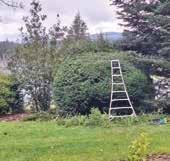






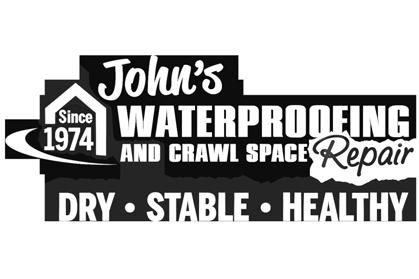

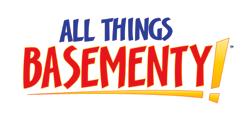






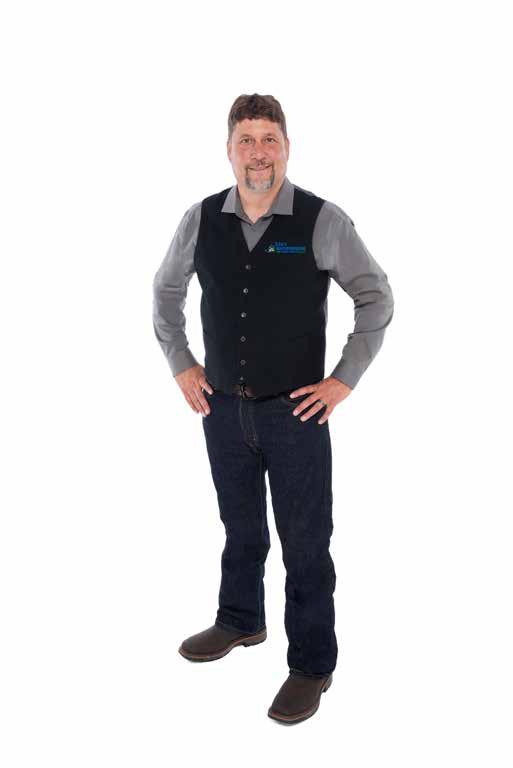
As more settlers arrived in the Willamette Valley, towns began to spring up along the stagecoach routes. The area now known as Woodburn was originally part of the Donation Land Claim Act of 1850, a federal construct that encouraged settlers to establish farms by offering free land. It wasn’t long before the small settlement began to grow, as more pioneers homesteaded the fertile soil of the region. Early settlers such as Eli C. Cooley, Bradford S. Bonney, George Leisure, and Jean B. Ducharme were some of the first settlers to lay claims in the area.

By Robert Matsumura, Active Media
Boasting a rich and colorful history, Woodburn grew from humble origins as a farming community into a vibrant city whose story reflects the broader history of Oregon itself — marked by waves of settlement, agricultural innovation, and community spirit. Today a bustling city of over 25,000 residents, Woodburn continues to help shape the dynamic future of the Willamette Valley, and its past tells a tale of the region’s cultural and economic identity.
Far prior to settlers arriving in the Willamette Valley, the region was home to various indigenous tribes, primarily the Kalapuya people. Having lived in the valley for thousands of years, Kalapuya were skilled hunters, fisherman, and gatherers, thriving on a diet of fish, berries, and plants. Present-day Woodburn was home to many of their seasonal camps and traditional hunting grounds.
European exploration of the region commenced in the early 19th century as fur traders and explorers like David Douglas and the Hudson’s Bay Company arrived to chart the land. By the mid-1800s settlers began flooding into the Oregon Territory, drawn by the promise of fertile land and new opportunities.
In 1862 Jesse Settlemier purchased 214 acres from Ducharme in a foreclosure sale and founded the Woodburn Nursery Company, a venture that gained prominence throughout the West. In 1871 Settlemier platted four blocks of what evolved into downtown Woodburn. He later donated land to the Oregon and California Railroad to lay tracks through the town. Originally, the town was named Halsey, but the name was changed due to another town in the Willamette Valley having the same name. It is said that the town

was named Woodburn because of a slash burn in the 1880s that got out of control and set flame to a nearby woodlot.
Woodburn was officially incorporated as a city in 1889, a milestone that marked its transition from a rural outpost to a burgeoning agricultural hub. In the years that followed, Woodburn’s position in the heart of the Willamette Valley, one of the most productive agricultural regions in the country, allowed it to thrive.
From the beginning, agriculture has been at the core of Woodburn’s economy and identity. The Willamette Valley proved ideal for growing a wide range of crops, including wheat, oats, and vegetables. It was the establishment of fruit orchards, however,
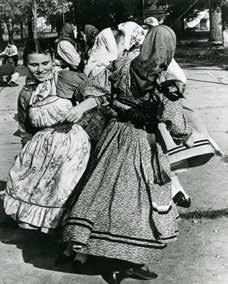
in the late 19th century, that truly put Woodburn on the map. By the early 1900s, the city had earned a reputation as one of the best fruit-growing regions in Oregon.
The Southern Pacific Railroad, which passed through Woodburn, facilitated the transport of agricultural products to markets far beyond Oregon. This transportation network spurred opportunities for growth, and both residents and businesses burgeoned in the area.
World War II brought a surge of activity to Woodburn. The wartime economy provided a boost to the local industry, with many farms shifting to produce goods for the war effort. It was during this time that the U.S. government’s Braceros Program brought agricultural workers from Mexico to Oregon to help work the farms, which were suffering a labor shortage due to men serving abroad in the war. Many of these workers eventually settled in Woodburn. Today 95 percent of the businesses in downtown Woodburn are Latino owned-and -operated.
After World War II, Woodburn continued to grow and change. The postwar boom saw the development of new businesses and infrastructure as
the population expanded rapidly. In the 1950s and 1960s, Woodburn experienced significant suburbanization.

The construction of highways made it easier for people to commute to nearby cities, allowing Woodburn to attract new residents seeking a quieter, rural lifestyle while still maintaining access to urban amenities.
Also during the 1950s, Molokans, a Christian sect which had broken away from the Russian Orthodox Church, began settling in the Woodburn area and the surrounding Willamette Valley.
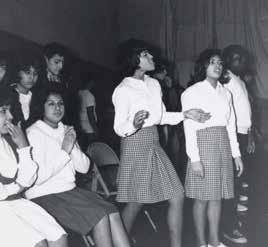
These Russian Orthodox Old Believers arrived by the thousands, and in 2022 it was estimated that 10,000 Old Believers live in the Woodburn area. Many of these children have the good fortune to attend one of the few K-12 public s chools in the U.S. with a Russian language program.
The establishment of the Woodburn Company Stores in the 1990s also provided a significant boost to the economy with its outlet stores drawing visitors from both near and far. The outlet mall still remains a key
attraction, bringing thousands of shoppers each year.
Today’s Woodburn: A Diverse and Thriving Community
Today, Woodburn is a diverse and vibrant city. While it remains a hub of agriculture, the city is also home to a growing number of wineries, reflecting the popularity of Oregon wines. In addition to its agricultural heritage, Woodburn’s rich cultural diversity is reflected in the city’s local festivals, restaurants, and community events such as the annual Woodburn Fiesta Mexicana, which celebrates the city’s Mexican heritage with music, dance and food, drawing crowds from all over the region. Woodburn also takes pride in its historic downtown, where many of the charming buildings and storefronts from the late 19th and early 20th centuries still reside. The Woodburn History Museum provides glimpses into the city’s past, featuring artifacts and exhibiting highlights of the agricultural roots and the people who helped shape the area.
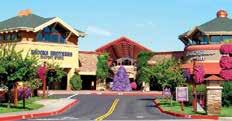
So the next time you’re traveling down I-5, take the opportunity to explore Woodburn and its unique historical and cultural heritage. A portrait of resiliency, hard work and civic pride, Woodburn is truly one of the Willamette Valley’s rising stars!



